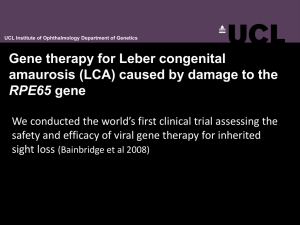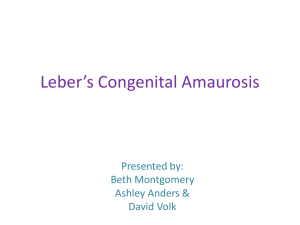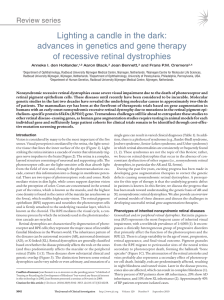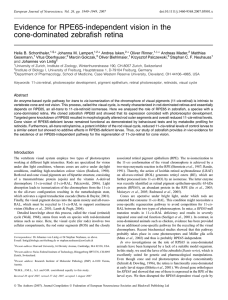Optimising the benefits of retinal gene therapy using animal models
advertisement
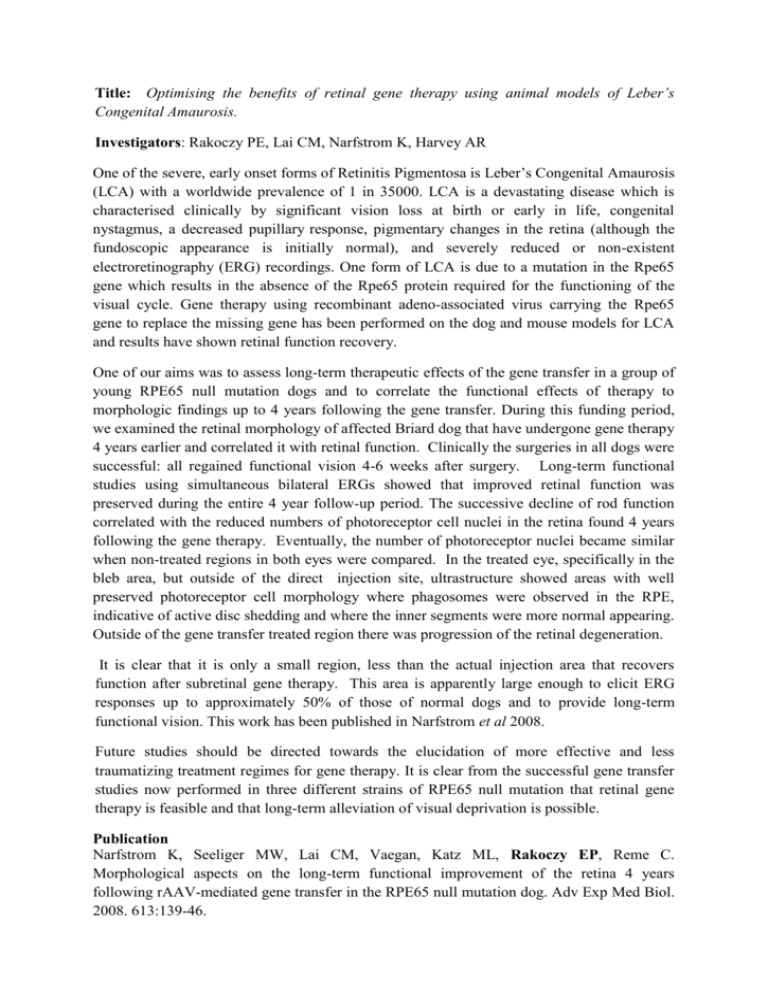
Title: Optimising the benefits of retinal gene therapy using animal models of Leber’s Congenital Amaurosis. Investigators: Rakoczy PE, Lai CM, Narfstrom K, Harvey AR One of the severe, early onset forms of Retinitis Pigmentosa is Leber’s Congenital Amaurosis (LCA) with a worldwide prevalence of 1 in 35000. LCA is a devastating disease which is characterised clinically by significant vision loss at birth or early in life, congenital nystagmus, a decreased pupillary response, pigmentary changes in the retina (although the fundoscopic appearance is initially normal), and severely reduced or non-existent electroretinography (ERG) recordings. One form of LCA is due to a mutation in the Rpe65 gene which results in the absence of the Rpe65 protein required for the functioning of the visual cycle. Gene therapy using recombinant adeno-associated virus carrying the Rpe65 gene to replace the missing gene has been performed on the dog and mouse models for LCA and results have shown retinal function recovery. One of our aims was to assess long-term therapeutic effects of the gene transfer in a group of young RPE65 null mutation dogs and to correlate the functional effects of therapy to morphologic findings up to 4 years following the gene transfer. During this funding period, we examined the retinal morphology of affected Briard dog that have undergone gene therapy 4 years earlier and correlated it with retinal function. Clinically the surgeries in all dogs were successful: all regained functional vision 4-6 weeks after surgery. Long-term functional studies using simultaneous bilateral ERGs showed that improved retinal function was preserved during the entire 4 year follow-up period. The successive decline of rod function correlated with the reduced numbers of photoreceptor cell nuclei in the retina found 4 years following the gene therapy. Eventually, the number of photoreceptor nuclei became similar when non-treated regions in both eyes were compared. In the treated eye, specifically in the bleb area, but outside of the direct injection site, ultrastructure showed areas with well preserved photoreceptor cell morphology where phagosomes were observed in the RPE, indicative of active disc shedding and where the inner segments were more normal appearing. Outside of the gene transfer treated region there was progression of the retinal degeneration. It is clear that it is only a small region, less than the actual injection area that recovers function after subretinal gene therapy. This area is apparently large enough to elicit ERG responses up to approximately 50% of those of normal dogs and to provide long-term functional vision. This work has been published in Narfstrom et al 2008. Future studies should be directed towards the elucidation of more effective and less traumatizing treatment regimes for gene therapy. It is clear from the successful gene transfer studies now performed in three different strains of RPE65 null mutation that retinal gene therapy is feasible and that long-term alleviation of visual deprivation is possible. Publication Narfstrom K, Seeliger MW, Lai CM, Vaegan, Katz ML, Rakoczy EP, Reme C. Morphological aspects on the long-term functional improvement of the retina 4 years following rAAV-mediated gene transfer in the RPE65 null mutation dog. Adv Exp Med Biol. 2008. 613:139-46.
